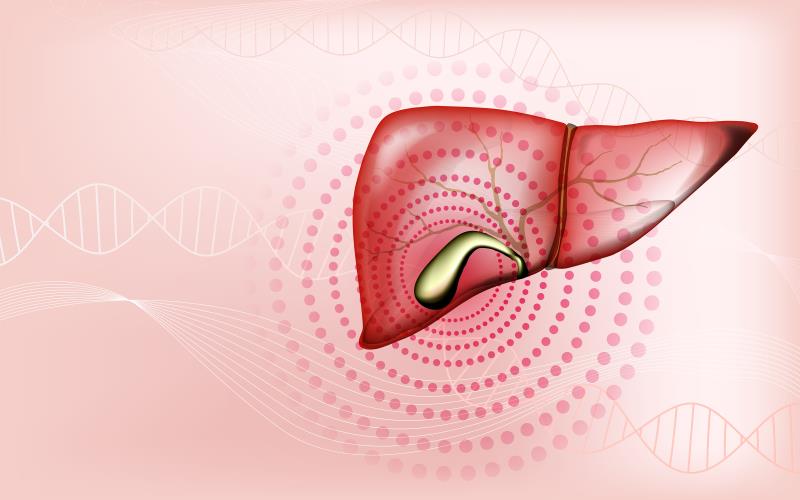Givosiran holds promise for rare genetic disorder





Patients with acute intermittent porphyria (AIP) – the most common subtype of acute hepatic porphyria (AHP) – had significantly reduced attack rates, as well as improvements in other parameters, with givosiran, the phase III ENVISION trial has shown.
“[AHP patients] with ongoing attacks have a severe disease burden … [W]e found that a givosiran-mediated reduction in hepatic ALAS1* messenger RNA resulted in a sustained lowering of heme intermediates ALA** and porphobilinogen (PBG), which are thought to cause the manifestations of this disorder,” said the researchers.
Givosiran inhibits hepatic ALAS1 expression, thus preventing ALA and PBG accumulation, and the subsequent acute attacks and chronic manifestations in AHP that could be life-threatening. [Lancet 2010;375:924-937; Patient 2018;11:527-537]
Ninety-four AHP patients (n=89 with AIP; mean age 38.8 years, 89 percent female) were randomized 1:1 to receive monthly SC givosiran (2.5 mg/kg) or placebo for 6 months. The following data reflect the 6-month results for patients with AIP. [N Engl J Med 2020;382:2289-2301]
Mean AAR*** was lower with givosiran vs placebo (3.2 vs 12.5; p<0.001), as was median AAR (1 vs 10.7). Median AAR reduction was already evident at month 1 and was sustained through month 6. Moreover, half of givosiran recipients had no porphyria attacks vs 17 percent with placebo.
Givosiran use also led to better daily pain scores (p=0.046) and less opioid use (67 percent vs 88 percent) vs placebo. These are clinically relevant, noted the researchers, owing to the complex analgesic regimen required for neuropathic pain, the cardinal symptom of AHP.
Mean annualized number of days of hemin use was significantly lower with givosiran vs placebo (6.8 vs 29.7 days; p<0.001). More than half of givosiran recipients did not receive any hemin infusion (23 percent in placebo arm). “[The reduced] hemin use may be beneficial, since hemin is potentially associated with both acute … and chronic side effects,” noted the researchers.
Acceptable safety
There were twice as many givosiran vs placebo recipients who had elevated alanine aminotransferase levels (40 percent vs 20 percent). “[However, most resolved] with continued administration of givosiran, which suggests adaptation by the liver,” they said.
Despite the higher incidence of renal# adverse events with givosiran vs placebo (15 percent vs 7 percent), most were transient and reversible, and none led to treatment withdrawal. “[Nonetheless,] renal function should be monitored during givosiran treatment, as clinically indicated,” they stressed.
Hemin alternative
Current treatment alternatives for AHP are limited to IV opioid, glucose, or hemin administration. [Br J Haematol 2017;176:527-538] “However, long-term therapy with hemin can cause thrombotic complications and may produce iron overload,” said editorialist Dr Gloria Gonzalez‑Aseguinolaza from the University of Navarra in Pamplona, Spain. “Moreover, cases of transient renal insufficiency have been reported. Thus, there is an urgent need for new effective therapies [in this setting].”
The findings suggest that givosiran – which has been approved for the treatment of AHP in adults (by the US FDA and EMA) and adolescents aged >12 years (by EMA) – represents a very attractive alternative to IV hemin administration, noted Gonzalez‑Aseguinolaza.
However, the follow-up duration is rather short for a chronic condition, while the high AE rates with givosiran may be “worrisome”, she noted. Also, the safety data could have been confounded by the common co-existing illnesses and long-term complications of AHP (ie, chronic kidney disease [CKD], liver damage). [N Engl J Med 2017;377:862-872] “[These] may have been exacerbated by givosiran,” she said.
Other issues that need to be addressed in future trials are the likelihood of predicting which patients will have serious AEs, and whether givosiran should be limited to those with no history of CKD or elevated liver enzyme levels, she added.
The open-label extension phase incorporating patients with other## AHP subtypes to ascertain the potential of givosiran across the AHP spectrum, as well as its long-term efficacy and safety, is underway.